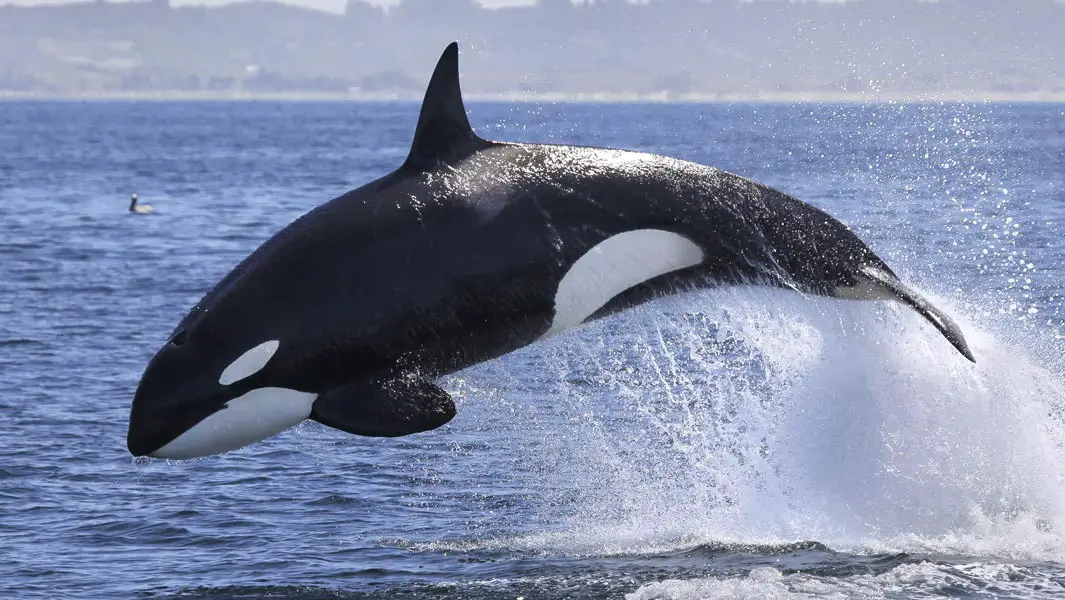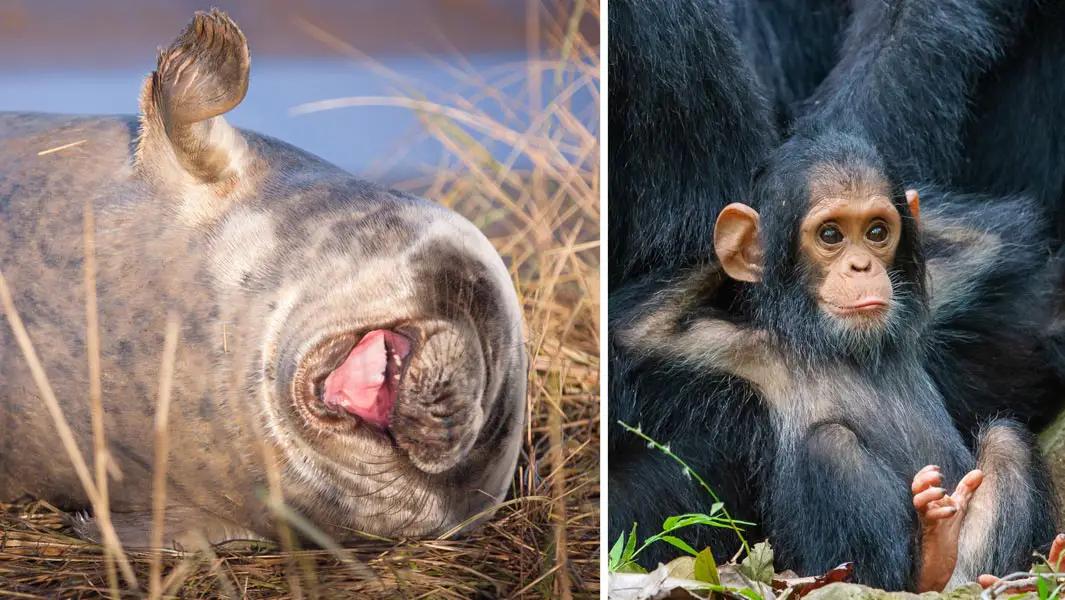


The results of the 2019 edition of the Comedy Wildlife Photography Awards (CWPA) are in, and the overall winner is eye-wateringly good...

The well-timed snap of a lion cub about to take its life in its paws was taken by Sarah Skinner and was cheekily entitled "Grab Life By The...".
Her prize is a one-week safari in Kenya, where she will have the chance to snap a variety of record-breaking species, including the tallest animals (giraffes), the fastest mammal sprinter (cheetah) and the largest terrestrial animals (elephants), and of course more lions - the most social big cats (though presumably the male lion in this picture wan't feeling particularly "sociable" after this photo was taken!).

The CWPA contest was started in 2014 by Tanzania-based wildlife photographers and nature lovers Tom Sullam and Paul Joynson-Hicks. The driving force behind its inception was to take a new approach to conservation: to blend humour with helping wildlife.

As co-founder of the Comedy Wildlife Photography Awards and its head judge, Tom Sullam, told Guinness World Records: "The competition grew out of a simple desire: to show wildlife at its funniest, show that these incredible animals can amuse us, entertain us and ultimately make us realize that we share this planet with them.
"We felt there was a place in photography that promote the humour of these animals, as a means of building a positive bond, and enabling a conservation effort based on a strong positive tie.
"There is a place for the strong shocking images of poached animals, but we also know that by liking something and having a positive association with that thing, positive reaction can be created also. The link between conservation and these humorous animals is fundamental, and that is what led to the awards."

Working hand in hand with the Born Free Foundation, they encourage “conservation through competition”, raising the profile of endangered species while at the same time raising a smile.
Asked whether they’ve faced any resistance from more traditional conservation quarters, Tom revealed: "Yes, but eventually no!
"Let me explain… Initially people remark that our competition is poking fun at animals. But that is precisely not what we are doing. We are taking a hugely important issue (conservation) and sending that message to people via a positive medium – laughter. Once we explain our position, and the source of our reasoning, people tend to come round to the positive message pretty quickly!"
They have clearly struck a chord among photographers because the contest continues to grow in popularity. This year, the CWPAs attracted its biggest turnout yet, receiving almost 4,000 entries from 68 different countries.
As the geographical range of the participants has increased, so too has the diversity of the animals being submitted. Co-founder Paul said: "Every year we do this competition, it gets more and more exciting seeing how people visualize the funny sides of wildlife in the wild. And each year we see a wider variety of species doing funny things, whether it’s a very naughty penguin (which had my kids rolling around the floor in hysterics) or dancing lions, a chillin’ chimp or even bee-eaters having a shouting match – they’re hysterical!
"Of course, the other aspect of our funny competition is letting people know what they can do at home to be conservationists. Our planet is in distress, we all know that, now we just need to know what to do. Hopefully, we can provide a few small tips to get people started."
Some species crop up more frequently than others, as Tom added: "There are often penguins, seals, polar bears and squirrels – all of which have their funny moments, but the more species we see, the more we realise that each animal, through anthropomorphism, can tickle us where it makes us laugh the most. There is definitely not a 'funniest' of all the animals!"

So how exactly does the judging process work? Tom explained: "We have a number of judges, made up of photographic masters, leaders in the field of conservation and TV personalities with a strong conservation interest.
"Each judge scores the images in private, and once the scores are added up we have a winner. It is a very simple process.
"The interesting thing is how differently people respond to the images; one judge might find an image hilarious while another may score that same image with a low mark. At the end, however, we do seem to come up with the best image."

Does Tom have any top tips for anyone thinking of applying to the CWPAs in 2020?
"The image needs to be well-photographed – technically proficient, sharp, good depth of field if necessary, well-composed (very important) and finally… It must make us laugh out loud.
"Secretly, though, my favourite animal is a honey badger, and I have yet to see a funny one…"
So if anyone happens to be passing a honey badger doing something amusing, you better have your camera ready! Details of the 2020 competition will be announced on the CWPA website – you can get a heads-up on when it opens for entries by signing up to their mailing list here.

"Oh My!": Harry Walker / CWPA 2019
Sea otter: If there were a record for "cutest animal", there’s a good chance these marine mustelids would take top spot – especially when pulling poses like this! A large part of their charm comes from their fluffy appearance, and that actually is record-worthy. Sea otters have the densest fur of any animal with their bodies sporting as many as 160,000 hairs per cm2 (~1 million hairs per sq in). Compare that to about 9,300 hairs per square centimetre (60,000 hairs per sq in) for the back of a domestic cat.

"What Are You Looking At?": Pablo Daniel Fernandez / CWPA 2019
Japanese macaque: Excluding humans, no ape or monkey is found living at higher latitudes than the Japanese macaque, making them the most northerly primates. Also known as snow monkeys, they have smartly learned to take advantage of local hot springs in the mountains of central Honshu, where they can find some respite from the subzero temperatures during the bitter winter months.

"Waltz Gone Wrong!": Alastair Marsh / CWPA 2019
Red fox: Few land-based carnivores have been as successful as these wily canids, whose range now extends across the entire northern hemisphere, from the Arctic Circle down to North Africa. Their strength is their adaptability; they have not merely adjusted to survive in ever-sprawling urban environments but actually thrive in them. They also happen to be the largest foxes, sitting at the top of the Vulpes family tree when it comes to size.

"Once Again, Cecil Forgot the Map!": Susan Knowler / CWPA 2019
Capybara: Imagine if your guinea pig were the same size as a cocker spaniel and you’ve pretty much got a capybara – the world’s largest rodent. These swamp dwellers from South America and Central America are as comfortable in the water as they are on land, which is handy when you’re considered a tasty meal in both settings, for predators such as jaguars, caimans and anacondas.

"Holly Jolly Snowy": Vicki Jauron / CWPA 2019
Snowy owl: Harry Potter’s pet, Hedwig, has really raised the profile of snowy owls in recent years, but these beautiful birds have also long graced the pages of the record books. Able to endure lows of -40°C (-40°F), buffeting winds and limited hours of daylight in the high Arctic tundra, they are the most northerly owls on the planet, and arguably the toughest!
Header and thumbnail images: Sarah Skinner; Vlado Pirsa; Tom Mangelsen (all Comedy Wildlife Photography Awards 2019)